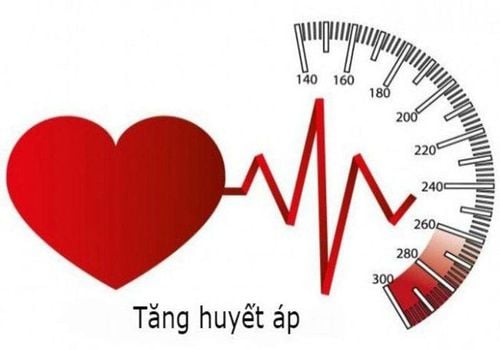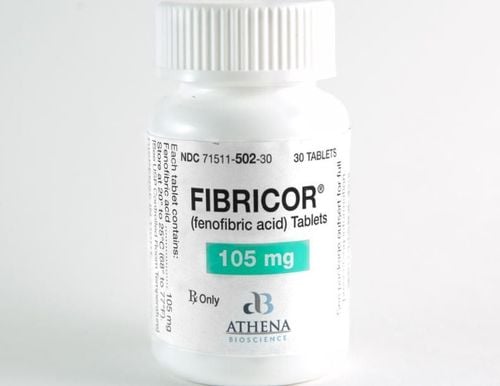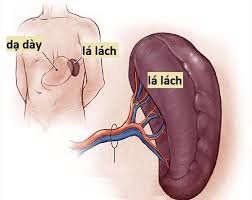This is an automatically translated article.
The article was professionally consulted by Doctor Trinh Le Hong Minh - Radiologist - Radiology Department - Vinmec Central Park International General Hospital.The aorta is the largest artery in the body and is responsible for carrying blood pumped out of the heart or sending the machine out of the heart to other organs. Aortic aneurysms are the most common abdominal aortic aneurysms. This condition needs to be diagnosed early with clinical manifestations through exploratory clinical diagnoses for timely conclusion and treatment.
1. What is an abdominal aortic aneurysm?
The aorta that runs through the chest to the abdomen is called the abdominal aorta. When a weakened area of the abdominal aorta dilates or bulges out, it is called an abdominal aortic aneurysm. When that happens, the pressure of blood flowing through the abdominal aorta causes the weakened part of the aorta to bulge abnormally like a balloon. Besides, abdominal aortic aneurysms cause serious health problems such as embolism, blood clots causing pain and even loss of limbs.2. Clinical symptoms of abdominal aortic aneurysm
At the beginning of the aneurysm stage, the patient will not have any symptoms, but gradually the patient may appear some of the following symptoms:Notice the pulse in the abdomen, almost beating the heartbeat of the heart. Occurrence of sudden pain in the abdomen, lower back, increasing pain, signaling aortic aneurysm rupture Signs of pain, cyanosis in the toes and feet because the debris from the aneurysm causes blood vessel blockage The patient feels fatigued, dizzy, pain, and even loses consciousness when the aortic aneurysm ruptures. This is a dangerous situation that requires immediate medical attention and treatment.

3. Causes of ruptured abdominal aortic aneurysm
Experts and doctors say that there are many factors that contribute to the rupture of an abdominal aortic aneurysm, including the following typical causes:Smoking is the main risk factor for aneurysms. aorta High blood pressure, especially if left untreated, can increase the risk of aneurysmal formation Atherosclerosis, which occurs due to high cholesterol and high blood pressure Certain genetic conditions can increase the risk of aneury aorta, due to the weakness of the blood vessels caused by these conditions. Marfan syndrome, Ehlers-Danlos syndrome, Takayasu arteritis, bicuspid aortic valve, Loeys-Dietz syndrome, familial thoracic aortic aneurysm, and polycystic kidney disease Trauma to the abdomen or chest can cause aneurysms Progressive or ruptured aorta Men over the age of 60 are most at risk for ruptured abdominal aortic aneurysms....

4. Imaging tests for ruptured abdominal aortic aneurysm
To diagnose ruptured abdominal aortic aneurysm, besides the clinical symptoms, the patient is prescribed by the doctor to perform imaging studies to make an accurate conclusion. In which, ultrasound is a particularly sensitive method in diagnosing abdominal aortic aneurysm, with the advantages of safety, speed in emergency cases, and accurate diagnosis. Ultrasound will provide information about:Actual diameter and length of aneurysm Aneurysm lumen diameter (when contrast is injected) Relation of the aneurysm to the major arteries originating from the aorta belly. Currently, Doppler ultrasound is an effective method used by doctors to screen and accurately diagnose ruptured abdominal aortic aneurysm. Using this imaging method, the physician can optimally assess the length of the ruptured aorta, or the anatomical variations, and the location and severity of the obstructive or aneurysms. combined visceral or iliac arteries.
Ultrasound diagnosis of ruptured aortic aneurysm is a non-traumatic, cost-effective method suitable for most patients and can be performed many times without affecting the patient. Furthermore, ultrasonography is a common practice and is rapidly performed in most medical facilities, contributing to the increase in the rate of accurate diagnosis of abdominal aortic aneurysm.
In addition to ultrasound, ruptured abdominal aortic aneurysm can also apply CT scan, magnetic resonance imaging (MRI) to diagnose. Specifically:
CT scans can detect changes in the structure of the aorta and can be helpful in planning surgery. Magnetic resonance imaging (MRI) can identify anatomical abnormalities, depending on On the condition of ruptured abdominal aortic aneurysm, the doctor will prescribe the use of MRI or CT scan for the most accurate diagnosis.
5. Preventing the risk of ruptured abdominal aortic aneurysm

Don't smoke Control blood pressure Control blood sugar level , blood lipids Periodic health check, not subjective when health shows abnormal signs. Vinmec International General Hospital is the leading medical address for diagnosis and treatment of aortic aneurysms. It has all the necessary medical equipment to perform simple to complex treatments such as medical treatment, stent-graft intervention, surgery... Highly qualified, trained and certified in technical skills, can handle quickly and effectively, especially in cases of urgent emergency. Therefore, patients with thoracic aortic aneurysms can rest assured with a strict, methodical and effective treatment process at Vinmec.
Please dial HOTLINE for more information or register for an appointment HERE. Download MyVinmec app to make appointments faster and to manage your bookings easily.














